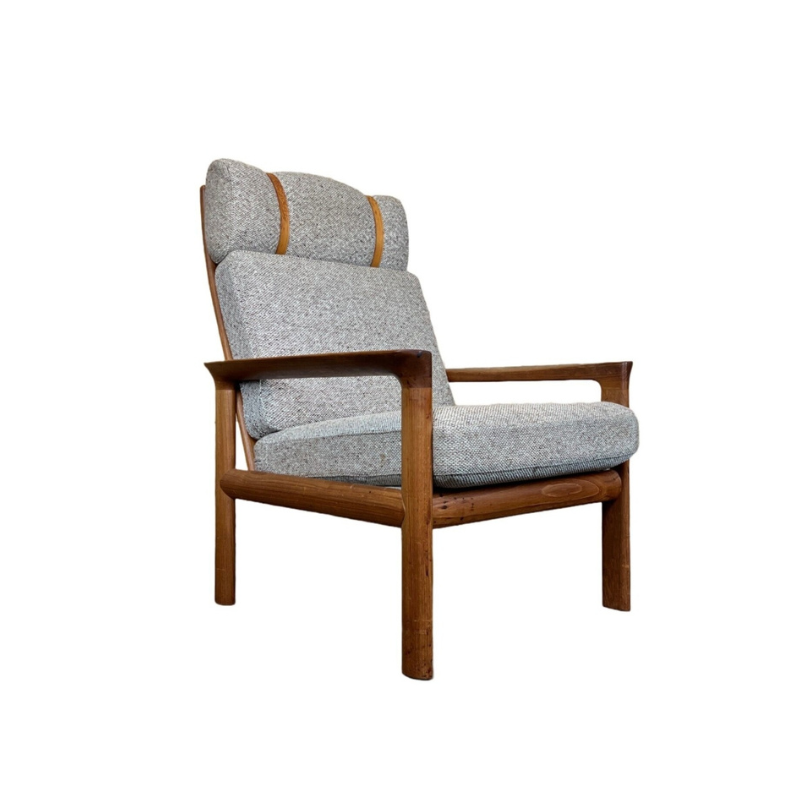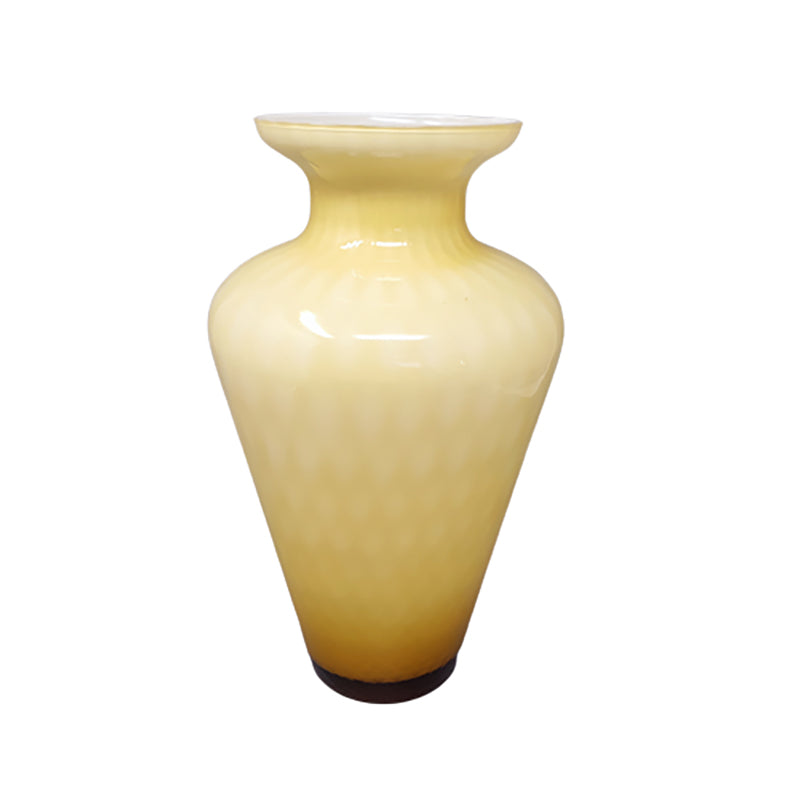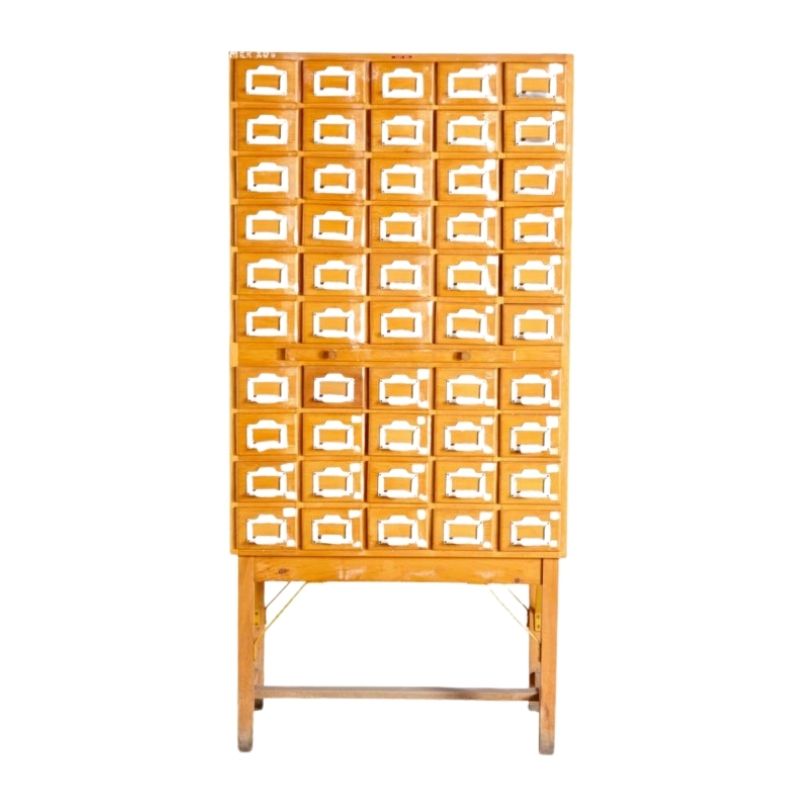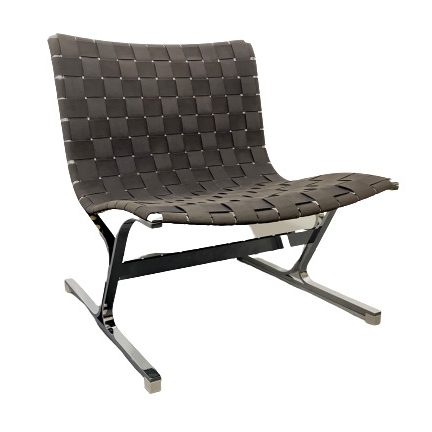My shop has been asked to re-wrap 10 Umanoff stool backs with fiber/paper rush. At first this seemed like a very straight forward job. (My shop does refinishing and restoration but not so much this type of work). Does anyone have any suggestions as to why the rush is bunching up no matter how taught it is? The original seems flattened and pressed into a form. We added cardboard plus dots of glue on the iron to prevent slippage. The original seems to be coated with a wax or lacquer spray as well. The first two photos are of our attempt and the last is of an original. Any suggestions?
Thanks for any help. 

Just an amateur here, but...
Just an amateur here, but might I recommend starting in the middle of the backrest with roughly the midpoint of the rope, then work your way to each end. This would ensure that your middle strands are vertical, and cut your "compounding" dimensional errors in half. It may also be easier to get a tight wrap going smaller, rather than larger.
What cdsilva said--
start in the middle after measuring off what you need for the whole thing and finding the midpoint of the rush. You don't want any joins in that, I suspect.
Also, try wetting the rush. Instructions linked below. (I have very limited experience with fiber rush to the point that I can't even remember the last time I worked with it. But if I was doing those chairs that you have, I would try wetting the rush.)
http://www.countryseat.com/faqseats.htm#rushwd
It would be clear
in a few moments, after trying to wrap from the middle toward the sides, that the cord won't remain tight, as it will try to slip away toward the narrower (i.e., looser) part of the back. (If that's condescending or patronizing, I apologize.)
The only way I can see to do it would be to work from both sides, toward the middle -- so the cord has a place to rest, and remain tight, with each pass. What happens in the middle is a question.
Was there a joint, knot, etc, in the center of the back, when you removed the old cord ?
I wonder why you didn't use...
I wonder why you didn't use a piece of cardboard the same size as the original? Perhaps that is all it will take to keep the rush from bunching. I'd try a full piece of cardboard and cover with "spray mount" or other paper safe slow drying spray adhesive. If you try this approach use an adhesive that is repositionable but becomes permanent when dry.
SDR
The cord might not slip if it is damp. I would also try using a small spring clamp to hold the wraps in place---on the metal, like a bookend, not on the rush itself as that would leave a dent.
If one reads up online about whether or not to soak paper rush, one will find some strong statements about not doing it. Wetting is probably not advisable for some weaves where the rush is pulled through tight openings and against itself over and over. Wet rush will probably start to shred a bit in that kind of application. BUT this is just simple wrapping and I think wetting it will be helpful and will not affect the rush adversely.
Also, yes--
cut your cardboard stuffing to exactly the shape of the back, as jesgord suggested.
And make yourself a shuttle that will keep your rush coil neat and easy to handle. I made out out of 1/4" plywood. The photo is of one that HH Perkins sells. Anything with that basic shape is ok. Don't use cardboard---it will get bent and annoy you long before you're done with the 10 chairs.
http://hhperkins.com/product_info.php/cPath/12_29_99/products_id/582
I'm sorry, but
wrapping a sharply tapered form is not the same as wrapping a piece whose sides are parallel. All other factors notwithstanding, the tapered nature of the piece requires special attention, namely, starting at the narrow end of the shape, so each turn has a place to nest and remain in place. Try it yourself, with sample materials. It's "simple" physics !
If a symmetrical method is chosen, whether starting or ending at the middle, a knot there will be necessary -- no ?
(Please don't shoot the messenger . . .)
.
Is the crease in the cardboard visible in the photo of the original from where the center tail was tucked in? It seems likely to me. And I don't see how you could wrap this from wide to narrow without the cord constantly slipping. I think it had to be wrapped from the arms up to the center and the tails tucked in (or knotted, or something).
SDR, all valid points you hav...
SDR, all valid points you have brought up, and I have no firsthand experience with either fiber rush or Umanoff pieces on which to base my comments.
However, if starting at the ends, how would you ensure that the middle wraps are vertical if you are also trying to ensure that the wraps are tight with no gaps; especially with the Umanoff design, where it appears that the linear arc lengths of the top and bottom edges are not equal?
Also from the photos, there is a central vertical rod in the backrest. Couldn't the midspan of the rush be wrapped around this (or tied) to provide a solid end for tensioning?
I think the wraps might stay put if
you use a small spring clamp to keep them from slipping. It would require some fancy hand choreography to manage the wrapping and unclamping and clamping again at the right moment. Or just slide the clamp over a bit right when you're ready to lay in the next wrap.
Knots would show, though ok, this one on 1st Dibs with original wrapping looks like it has a knot in the center back near the bottom:
eta: dang, can't link to 1st Dibs photos, I guess. Well, anyway, there was an obvious knot and then I found another one on Dibs that had some kind of joint in the center back. I would much prefer to have the back look just like the first if I was doing these. I think getting the rush nice and pliable by soaking and then using a clamp or two as you go (top and bottom) might work. That's what I'd try, anyway.
http://shard3.1stdibs.us.com/archivesD/upload/8142/1498/8142_1274307635_...
If you were
determined to work "against the grain" in that way, I guess I'd agree that spanky's suggestions would be the ones to try. As for a knot, aren't there ways to hide it by pushing the knotted strand behind the visible strands at the back -- perhaps all the way at the bottom just above the lower frame rod ?
The vertical rod at the center is no doubt placed to resist the tendency for the tension of the cord to squeeze the frame. Perhaps it could double as a knotting place . . .
I suppose the knot could be eliminated by going "one way" all the way from one end of the chair to the other, using whatever means were necessary. Keeping the strands vertical all the way is surely an issue, as suggested, as well. It appears, from the photos, that the original cording diverged from the vertical as it moved away from the center -- being squeezed more tightly along the bottom than at the top ?
The knots always show, even if you
tuck the ends and the knot itself between the adjacent strands. OK, no, you can't see the actual knot but there's an interruption in that strand.
This is the same issue as when weaving rush-style chairs with paper cord (like the Wishbone chair). Except with them, you can do the knotting on the underside. But it still has to look as neat as possible.
Below is another one with a visible knot in the middle back. I dunno...I think it takes away from the look, even if it's in the back.
http:// https://www.1stdibs.com/furniture/seating/stools/arthur-umanoff-bar-stoo...
I would
clamp the chair to the bench so you can pull the cord like you mean it and not filp the chair.
Also, the cord has a twist in it. Twist the cord as you go to keep it uniform in thickness etc etc.
Use some kind of blunt tool to push the cord tight against the previous wraps and use the clamp to hold it if you need to.
If you need any help, please contact us at – info@designaddict.com









